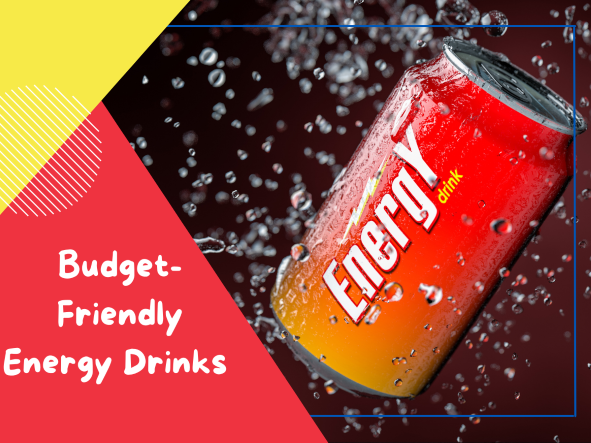Budget-Friendly Energy Drinks
In the US, 85% of the population drinks caffeinated beverages every day. For many people, an energy drink is their caffeinated beverage of choice.
When consumed properly, energy drinks improve brain function and can help you make it through a long day. But it can be hard to find an energy drink that meets your needs and tastes great but does not clean out your wallet.

And there are so many energy drink brands! How can you find the best one for you?
The best way to pick is to set some qualifications for your ideal energy drink, consider your options, and select an energy drink that best suits your unique needs. And re-evaluate if you don’t think you made the best initial choice.
So, what kind of qualifications should you set? Things to consider when choosing an energy drink are price, caffeine, and sugar.
Price
Unfortunately, most energy drinks are expensive. The average cost of an energy drink is $2.50-$5 for a 16-ounce can. For an energy drink every day, that adds up to $912.5-$1825 a year! Below are some popular Energy Drink brands, the cost of a 16 oz drink, and the total cost per year if a single drink is consumed per day.
|
Brand |
Price for a 16 oz drink |
Total cost per year (assuming one drink per day) |
|
Monster Energy |
$3.20 |
$1168.00 |
|
Bang |
$2.20 |
$803.00 |
|
Red Bull |
$4.00 |
$1460.00 |
|
Rock Star |
$1.40 |
$511.00 |
|
Teacher Power |
$0.36 |
$131.40 |
That’s a lot of money to spend on energy drinks! Nothing is wrong with buying these brands every once and a while. But in the long term, the cost adds up.
To spend less money and still get your 16 oz energy drink every morning, energy powders are the way to go.
Energy powders contain the same crucial ingredients that energy drinks contain. The main difference is that you have to mix it with water before enjoying it.
People may find this extra step inconvenient, but it makes energy powders much cheaper. Shipping also costs less for energy powders because they weigh less than pre-made drinks.
One scoop of Teacher Power Energy Drink makes a 16oz drink. There are 70 scoops per tub ($24.99), which means that each 16oz energy drink is about $0.36. Assuming you drink one drink per day, you only pay $131.40 per year for your energy drinks. That is roughly more than 75% less than Rock Star, Red Bull, Bang, or Monster energy drinks.
Other energy powders such as G-Fuel and Mixt Energy also have significantly lower costs than liquid energy drinks. If you aim to save some cash, energy powders are the way to go for your regular energy boost!
Caffeine
Cost is not the only thing to think about when picking out an energy drink. You need to watch the caffeine content, too.
Caffeine puts ‘the energy’ in energy drinks. Without it, energy drinks are ineffective in putting a pep in your step.

However, consuming too much caffeine can have nasty side effects. Insomnia, restlessness, depression, nausea, a pounding heartbeat, and other symptoms indicate that you’ve had too much caffeine. In extremely high and concentrated doses, caffeine can even cause seizures.
The FDA recommends no more than 400mg of caffeine daily.
The caffeine content of energy drinks and energy powders varies though many have less than 200 mg per 16 oz drink.
|
Brand |
Caffeine for 16 oz drink (mg) |
|
Monster Energy |
160 |
|
Bang |
300 |
|
Red Bull |
160 |
|
Rock Star |
160 |
|
Teacher Power |
100 |
Everyone has different sensitivities to caffeine. Find an energy drink that has just the right amount for you. Another advantage of drink powders is you control your caffeine dosage. If you want/need more caffeine, put in a scoop and a half. If you want less, just use half a scoop.
Sugar
Another thing that should be on your radar when energy drink shopping is the sugar content.
Energy drinks are often loaded with sugar to improve their taste. In 2015, the average energy drink had 56g of sugar per 16 oz. For perspective, the American Hospital Association recommends no more than 36g and 25g of sugar daily for men and women respectively.
It’s critical to compare the sugar content across energy drink brands. It’s a pretty wide range:
|
Brand |
Sugar for 16 oz drink (g) |
|
Monster Energy |
54 |
|
Bang |
0 |
|
Red Bull |
54 |
|
Rock Star |
31 |
|
Teacher Power |
0 |
Sugar is not good for us. So, when choosing an energy drink, the lower the sugar content, the better. The above table is a little misrepresentative because most energy drink brands do have a sugar-free option – it just is not their primary drink.
On the other hand, Teacher Power’s energy powders are always sugar-free, and they still taste great! They come in six flavors, so your taste buds do not get bored.
Other Possible Considerations
Price, caffeine, and sugar are the major players when it comes to picking an energy drink. However, some other things impact your decision. This includes B-vitamin content, flavors, chemical additives, convenience, and more.
Make notes and prioritize what is most important to you in an energy drink.
Then, find a drink that meets most of your criteria. Is this overkill for deciding what to drink with your breakfast? Maybe. But if you are going to drink it every morning, you should make sure it is what you want.
Teacher Power Rocks
No matter what you’re looking for: we’re confident that you can find it in Teacher Power Energy Drinks. Our energy powders are the highest quality for the lowest price: and with a taste that’s out of this world, there’s simply no beating them. But don’t just take our word for it. Try it out yourself!

Teacher Power Energy Drinks can be purchased on our website or on Amazon.com.
The content of Teacher Power’s website is for information only, not advice or guarantee of outcome. Information is gathered and shared from reputable sources; however, Teacher Power is not responsible for errors or omissions in reporting or explanation. No individuals, including those taking Teacher Power products, should use the information, resources or tools contained within to self-diagnosis or self-treat any health-related condition. Teacher Power gives no assurance or warranty regarding the accuracy, timeliness or applicability of the content.
By: Emeline Haroldsen
Sources:
“The Energy Drink Buzz”. Alberta Health Services. https://www.albertahealthservices.ca/assets/info/nutrition/if-nfs-energy-drink-buzz-h.pdf
Cikaric, Damjana. “20 Must-Know Energy Drink Statistics and Facts for 2022”. Medalerthelp. 2021. https://medalerthelp.org/blog/energy-drink-statistics/
Pearson, Keith. “Are Energy Drinks Good or Bad for You?”. Healthline. 2017. https://www.healthline.com/nutrition/energy-drinks
Spargo, Marty. “Cheap Energy Drinks: The Best Deals”. Reize. https://reizeclub.com/cheap-energy-drinks/#Guru_Energy
Spargo, Marty. “Energy Drink Ingredients, Price, & Caffeine (Complete Guide)”. Reize. https://reizeclub.com/energy-drinks-ingredients-price-caffeine/#Price
Anderson, Tim. “How Much Energy Powders Cost? (Is It Worth Every Penny?)”. Powder Insider. 2021. https://powderinsider.com/how-much-energy-drink-powders-cost/
“Spilling the Beans: How Much Caffeine Is Too Much?” FDA. 2018. https://www.fda.gov/consumers/consumer-updates/spilling-beans-how-much-caffeine-too-much
Haroldsen, Jae. “Energy Drink Powder is a Game Changer: Here’s Why”. Origin Nutraceutical. 2021. https://www.originnutra.com/blogs/nutrabuild/energy-drink-powder-is-a-game-changer-here-s-why
“Bang Energy Drink, Cotton Candy”. Publix. https://www.publix.com/pd/bang-energy-drink-cotton-candy/RIO-PCI-560510

